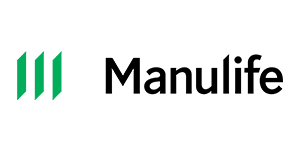A pension is a dedicated fund that provides income after retirement. The Canada Pension Plan is a cornerstone of retirement income for Canadian citizens, much like Social Security in the U.S. But does the CPP (QPP in Quebec) provide enough income to enable recipients to maintain the same standard of living after retiring?
In addition to the CPP, employer-sponsored pension plans provide added financial security for employees and their families. However, outside Quebec, there is currently no legislation in Canada mandating an employer-sponsored retirement plan for employees.
So what are retirement benefits for employees, and why should your company offer them? Read on as our team at Group Enroll explains this type of pension and how employer-sponsored retirement packages would benefit your company.
Table of Contents
What Is an Employer-Sponsored Pension, and How Does It Work?
Employer-sponsored plans deduct fund contributions from the employee’s salary, and many companies match the employee’s contributions. Some flexible plans allow participants to withdraw funds before the normal retirement age.
A few different types of pension plans exist, and each one works with specific metrics—such as age, salary, and work experience—to determine how much remuneration a retiree receives, and when.
The most popular employer-sponsored retirement plans fall into three categories as follows.
DBPP: Defined Benefit Pension Plan
As the name suggests, the DBPP pays a set monthly amount when employees reach normal retirement ages. The defined pension plan is a suitable choice for people with a low investment risk tolerance. An employer-sponsored DBPP also protects retirement income from inflation.
The metrics to calculate the retirement income amount include the following:
- Years of service with the company
- Average salary
- A set percentage multiplier
The DBPP provides a guaranteed income, though smaller than other retirement plans, and permits income splitting before the age of 65.
Employees do not share in the management of the funds. The employer is responsible for the investment and distribution of funds to retired employees so assumes the risk if the rate of return on investment fails to cover the set benefit amount for the employee.
DCPP: Defined Contribution Pension Plan
The DCPP calls for both the employer and employee to contribute a fixed amount to the plan annually. Usually, the contributions are a set percentage of an employee’s salary, deducted from wages and deposited into the pension plan.
A defined contribution plan is a type of investment plan. Some companies give employee fund investment input to the plan administrator. If the investments are successful, the value of the plan increases, resulting in a higher retirement income.
RRSP: Group Registered Retirement Savings Plan
Group RRSPs are the most flexible type of retirement plan. Plan participants have total control over the allocation of their contributions. Additionally, many RRSPs have early withdrawal allowances. Like DCPPs, Registered Retirement Savings Plans are investments that offer a potentially higher rate of return and associated risk.
PRPP: Pooled Registered Pension Plan
The structure of the pooled registered plan is like a DCPP in that the employee contributes a set amount annually to an investment fund. The primary difference is that employers are not required to contribute to a PRPP. The pooled register plan is an excellent choice for self-employed or freelance individuals who are not eligible for an employer-sponsored pension plan.
TFSA: Tax-Free Savings Account
Just as it sounds, a TFSA is a retirement savings account that can encompass a myriad of investment products. The contributions to a TFSA come from after-tax income, so the investment interest, capital gains, and dividends are tax-free.
- The employee does not pay tax on the income or growth within a TFSA
- A maximum contribution amount exists for a TFSA each year; an employee can contribute up to this amount without penalty
- TFSA withdrawals are tax-free
Voluntary Retirement Savings Plan (Quebec only)
A Voluntary Retirement Savings Plan is another viable option for self-employed individuals or employees who cannot take advantage of a workplace pension or PRPP. This plan is only available in Quebec.
Employer-Sponsored Pension Eligibility
Retirement pensions have different criteria for eligibility depending on the type of plan. For example, to be eligible for a defined benefit pension plan, the employee must have worked for the company for a set period that qualifies them to receive benefits. Defined contribution plans require participants to collect the pension before age 71, and the income is subject to tax.
All Canadian residents under the age of 71 are eligible for an RRSP if they have an income from which they can contribute to the plan.
It is also possible to be eligible for multiple pensions from several employers if an employee changed jobs or companies over the years. Since the income from retirement pensions correlates to job earnings, the amount may vary based on the type of employment and years of service.
Employer-Sponsored Pensions Are Good for Business
Here are a couple of reasons why employer-sponsored pensions benefit a business:
They Ensure Job Satisfaction and Employee Retention
Recent studies show that a robust retirement package creates added value for the employer, gives them an edge over the competition, and sets them apart as an employer of choice. This attracts the best talent and increases employee retention.
Reduced Financial Stress Fosters More Productivity
Providing employees with a company-sponsored retirement plan reduces signs of stress, anxiety, and depression caused by financial insecurity. This stress reduction, in turn, improves productivity, reduces absenteeism, and fosters a positive work environment.
Creating a Culture of Retirement Security in the Workplace
Employers can help employees create financial security and remain steadfast to their bottom line. Here are some considerations moving forward:
Work Toward Increasing Value for Money
By focusing on maximizing the financial value your retirement package produces for your employees, you increase the value for money. Ways to increase value for money include offering employees training on financial literacy, personal finance, retirement savings best practices, investment strategies, eliminating fees, lowering costs, and other financial knowledge.
Prioritize the Retirement Plan Within the Employee Benefits Package
Studies show that when it comes to reducing financial stress, increasing talent attraction, and retaining employees, employers of choice prioritize the retirement package over other benefits such as medical and dental insurance.
Customize Your Plan to the Needs of Your Workforce
What are retirement benefits that best suit your employees? Streamlining your plan and tailoring it to your team is an excellent way to increase value for money. Customized workplace retirement plans provide a great benefit and value to employees.
LIRA vs RRSP: What Should You Consider for Retirement?
What is business incorporation and how does it work? This article explains it all.
Contact Group Enroll for Assistance
At Group Enroll, we provide quotes to users from multiple providers. Contact us by completing the online quote form. After verifying your needs, our team at Group Enroll will request a quote and proposals from 5-10 insurance providers and then send you the best one.








